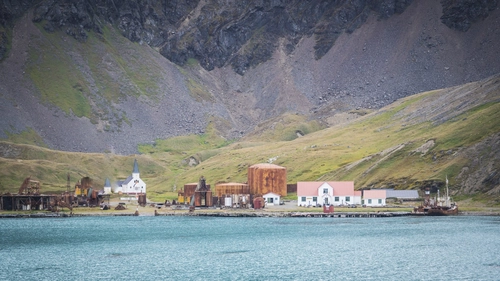Name: Adelie Penguin (Pygoscelis adeliae)
Height: 40 to 70 cm
Weight: 3.5 to 6 kg
Location: Antarctic Coast
Conservation status: Least Concern
Diet: Krill, small fish, squid
Appearance: Black with a white belly. Black facial feathers cover most of the orange bill. Thin white circle around the eyes.

How do Adelie penguins hunt?
Adelie penguins hunt in shallower coastal waters but can dive as deep as 175 meters (575 feet), usually for about 3 minutes.
Are Adelie penguins social?
During mating season, Adelie penguins form large colonies. They are known for their curiosity and somewhat selfish nature, often pushing one another into the water to test its safety.

What are Adelie penguins' mating rituals like?
Mating season starts in October. Penguins build nests from small stones. Parents take turns incubating the egg, with one parent fasting while the other hunts. After the chick hatches, parents leave it in a group called a crèche to hunt. Chicks start hunting at about 9 weeks old. Adelie penguins migrate around 13,000 km (8,077 miles) annually.
How long do Adelie penguins live?
Adelie penguins live 11-20 years in the wild.
How many Adelie penguins are there today?
The IUCN estimated 7,580,000 mature Adelie penguins in 2018.
Do Adelie penguins have any predators?
They are preyed upon by skuas, giant petrels (which target eggs and chicks), leopard seals, and orcas.

Five astounding Adelie penguin facts
- Named after Adelie Land in Antarctica, claimed by the French.
- A super colony of about 1.5 million Adelie penguins was found on the Danger Islands in 2018.
- Pygoscelis, their genus name, means “rump-legged.”
- They follow the sun around the Antarctic, as the winter sun never fully sets.
- Some migrations have been recorded as long as 17,600 km (10,940 miles).
Apsley Cherry-Garrard admired Adelie penguins, noting their individuality and gallant nature:
"Whatever [an Adelie] penguin does has individuality, and he lays bare his whole life for all to see. He cannot fly away. And because he is quaint in all that he does, but still more because he is fighting against bigger odds than any other bird, and fighting always with the most gallant pluck."






Related Trips



Life in a Penguin Colony

The Wonderful Weddell Sea: Places, Pics, and Impressions

Adélie Penguins: the Little People of the Antarctic

Adélie penguins in the Ross Sea - Antarctica

Day and night in Antarctica

Albatross, penguin and krill research in Antarctica

The Classic Polar Cruise: Antarctic Peninsula Facts, Pics, and More

The Ways and Wildlife of the Weddell Sea

The Eight Great Penguin Species of Antarctica

The bio-richness of the Ross Sea






 23 Days / 22 Nights
23 Days / 22 Nights


